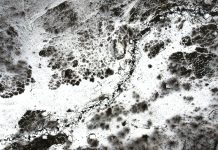Janani Ravikumar
Staff Writer
Summer is just around the corner, and it’s time to pull your bathing suits out of the closet, buy some sunblock, head down to the pool, and soak up some sunshine. But have you ever wondered what exactly goes into the water that fills swimming pools? It’s not something you can drink—that’s for sure. According to CNN, a group of researchers from the Center for Disease Control (CDC) collected water samples from 161 filters in public and private swimming pools across the country, more than half of which was contaminated with E. coli.
E. coli is a type of bacteria that lives in your intestines, according to a website run by the U.S. National Library of Medicine and the National Institutes of Health. Most types are harmless, but some can make you very ill, causing symptoms such as nausea, vomiting, diarrhea, severe abdominal cramps, and fever. The presence of E. coli in water indicates the presence of fecal matter in water. In other words, people poop in swimming pools. A lot.
The U.S. Environmental Protection Agency says that a large concentration of chlorine is usually included in pool water as a disinfectant. While all water contains at least a little chlorine (2 percent chlorine in drinking water, for example), pool water contains much, much more (12 percent to 95 percent). The reason for this is that pools are open to contamination from many sources, including the air itself, and that chlorine loses its potency as it evaporates with exposure to the sun. Theoretically, chlorine is supposed to kill bacteria and algae, and break down oils, lotions, skin flakes, and other forms of bather waste. Surely, with so much chlorine in the pool, E. coli shouldn’t be a problem.
Unfortunately, with the other dangers that such high concentrations of chlorine pose, people are turning to healthier, yet arguably less effective alternatives for pool cleaning and maintenance. According to the Baseline of Health Foundation, a study at the University of Cordoba in Spain found that haloacetic acids (HAAs), by-products of chlorine, were present in the urine of swimmers less than half an hour after they emerged from the pool. HAAs continued to appear in urine for up to three hours before they were fully expelled from the body. HAAs are, ironically enough, created as chlorine breaks down in water—the more chlorine you absorb, the higher your HAA levels are. According to an article on The Wall Street Journal, popular alternatives used instead of chlorine, such as saltwater, ozone gases, and ultraviolet light, don’t do nearly as good a job at killing bacteria as chlorine does.
According to Debbie Miles-Dutton, the Aquatics Director of the Recreation Department at the University of California, Santa Barbara, the pools at UCSB are well known in the district for their cleanliness and good water quality. To prevent introducing bacteria into the water, children who are not toilet trained are not allowed in the pool. During swimming classes, swimmers are required to take mandatory bathroom breaks as the pool is shut down for about ten minutes every hour. All pool cleaning and maintenance facilities are new or up to date.
So what can you do to protect yourself and others from poop in the pool? The CDC has some tips for healthy swimming. You can take a shower before you get into the pool, and wash your hands after you use the bathroom or change diapers to minimize the amount of bacteria you yourself introduce to the water—and encourage your friends to do the same so you don’t have to deal with their little friends. Remember that chlorine and other chemicals don’t kill bacteria instantly, so avoid swallowing pool water as well. Make sure kids take regular bathroom breaks—don’t wait for them to tell you that they need to use the bathroom, because at that time, it may be too late. Also, change diapers in a bathroom or in a diaper-changing area, and not at the poolside. Have a safe, bacteria-free summer!

















Comments are closed.